This October 21, join us in celebrating the National Reptile Awareness Day. Let us help spread awareness for our colourful, cold-blooded friends
Reptiles are one of the most evolutionarily remarkable group of air-breathing organisms that have successfully colonised the planet for millions of years. They have evolved a variety of ways to survive - many of which showcase the intelligence of the reptile community. Reptiles are cold-blooded vertebrates with long bodies, long tails and scaly skins. Did you know the largest animal to walk on earth - the dinosaur - was a reptile too?
Today, like with many other living organisms, reptiles too are faced with historical and cultural threats - like predation or smuggling, habitat loss, disease, pollution, and climate change. And this is where it becomes important that we, the better-learned ones, spread awareness and, to the best of our abilities, preserve and protect these beautiful animals as much as we can.
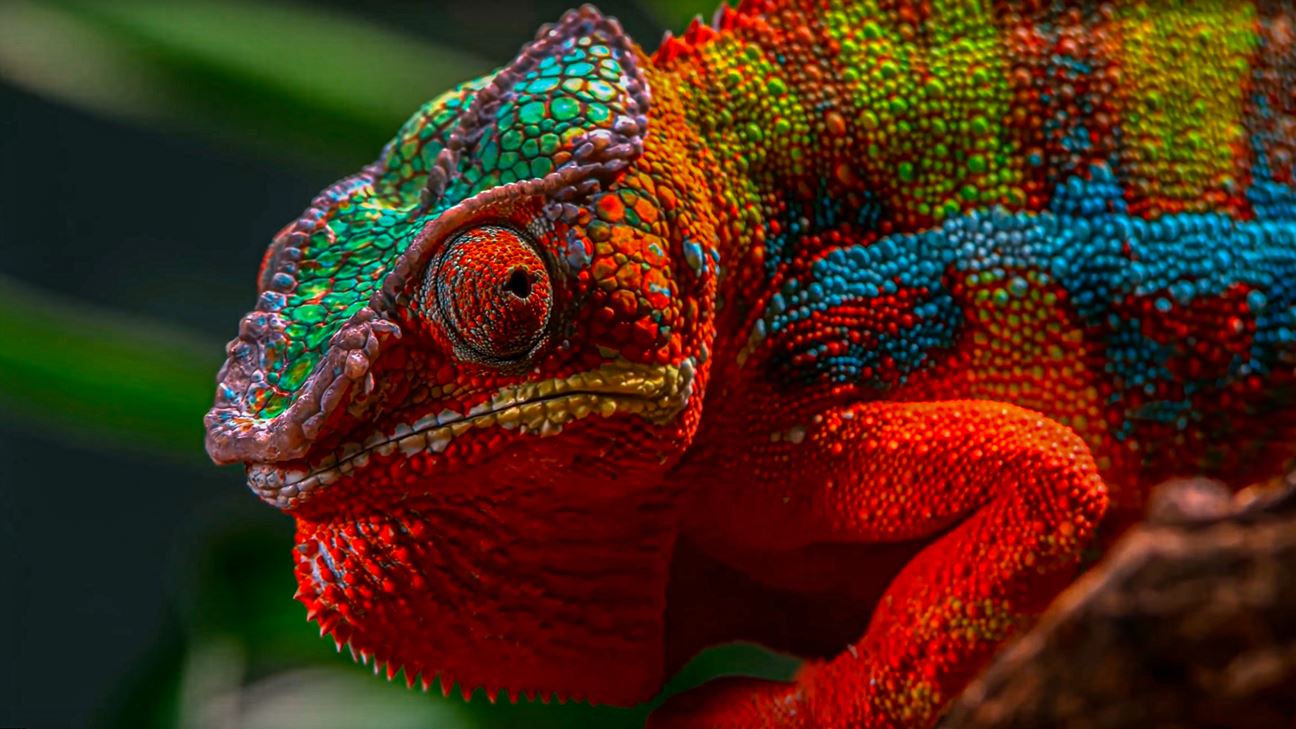
Adult male Ambilobe Panther Chameleon (Furcifer pardalis) | PHOTO BY shutter_o on SHUTTERSTOCK
National Reptile Awareness Day History
While the reptiles themselves can go back millions of years, the National Reptile Awareness Day only came into existence during the mid-twentieth century. It was only in 1966 when the needs and threats faced by reptiles started getting highlighted that the first Endangered Species Act was passed in the US. And that is how reptile awareness started spreading into the cultural mainstream. In the following years, many environmental movements contributed towards spreading awareness and conservation efforts that eventually led to the National Reptile Awareness Day being celebrated. The Endangered Species Act is the sole reason that many reptile species are surviving today.
Interesting Reptile Facts You Can Share With Your Friends on This National Reptile Awareness Day
- The Four Main Reptile Groups Are
The formidable crocodilians include alligators and crocodiles, the very diverse squamates which include snakes, lizards, and worm-lizards, the tuatara which include organisms that resemble lizards but have a different skull structure, and the turtles, which look like, well, turtles.
- The First-Ever Fully Adapted Reptile Lived 315 Million Years Ago
Hylonomus lyelli is not only the first-ever known reptile but also the first animal that completely adapted to terrestrial life. This lizard-like reptile lived during the late Carboniferous period and was only discovered in 1852 by Sir William Dawson. The name Hylonomus comes from combining Greek and Latin words and together suggesting 'wood' and 'forest mouse'. And lyelli was added in honour of Sir Charles Lyell, who happened to be Dawson’s teacher.
- They Hold a Few World Records Too - From Longest to Heaviest
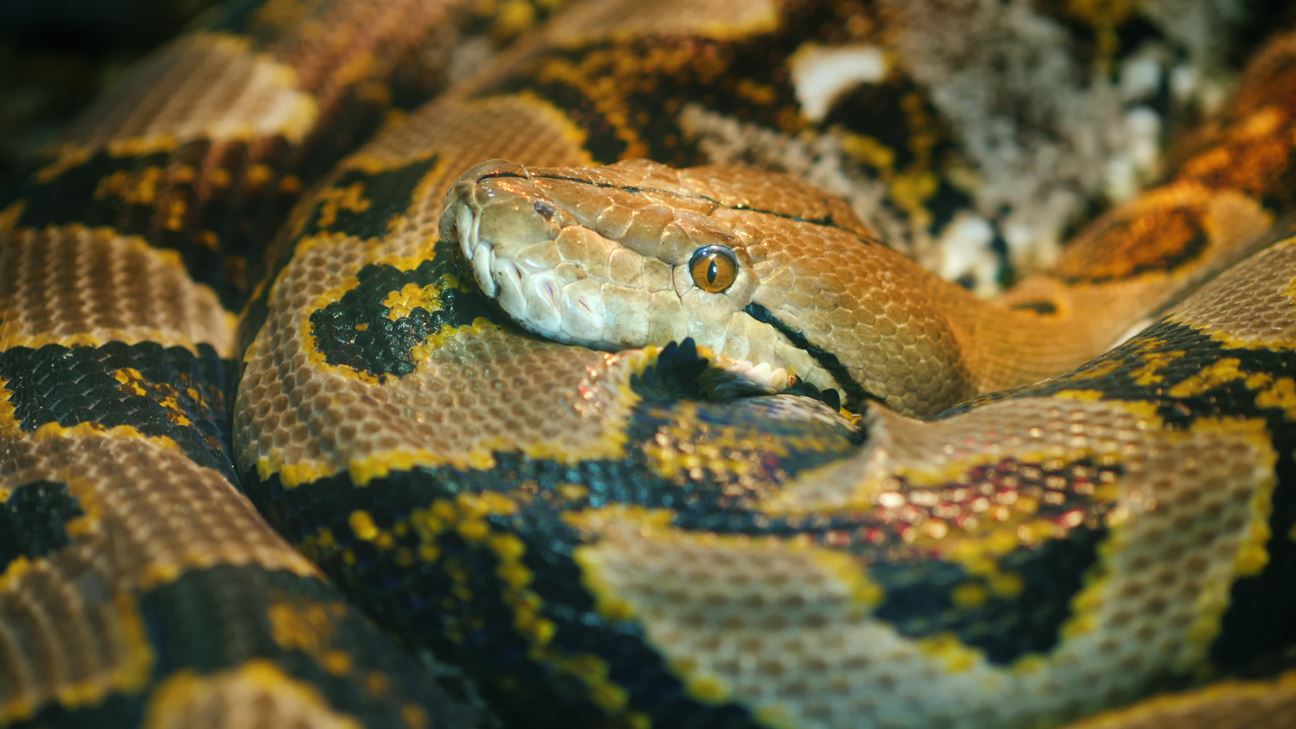
The longest snake in the world - THE giant Reticulated Python - curled into a ring | Photo by StockMediaSeller on SHUTTERSTOCK
The reticulated python is native to South and Southeast Asia and can grow an average of 6.25 meters in length. To date, the longest reticulated python ever recorded was a whopping 10 metres - that’s even longer than an average giraffe! The saltwater crocodile, on the other hand, holds the record for being the heaviest reptile to currently walk on earth and weighing way over 1,000 kilograms.
- To Smallest - That Is Just Over a Centimetre!
Out of 11,500 known species of reptiles, the male species of the newly discovered 'nano-chameleon' is only 13.5 millimetres long. While the female is more than twice as long at 29 millimetres. The Brookesia nana, or nano-chameleon, has suffered as the result of severe deforestation but scientists are hopeful that the species will survive.
- To the Oldest Known Living Animal at 189 Years!
Jonathan, a Seychelles giant tortoise, currently holds the record of being the oldest known living land animal in the world. At present, Jonathan lives on the island of Saint Helena, a British Overseas Territory in the South Atlantic Ocean where he is well cared for. Apart from cataracts and other age-related issues, the tortoise continues to be healthy and thriving. It is estimated that Jonathan was not born later than 1832, meaning he could very well be over 189 years. He has lived through two world wars and two global pandemics and even today continue to be the same gentle, loving, wise tortoise he always has been!
- They Are Everywhere - Except Icy-Cold Antarctica!
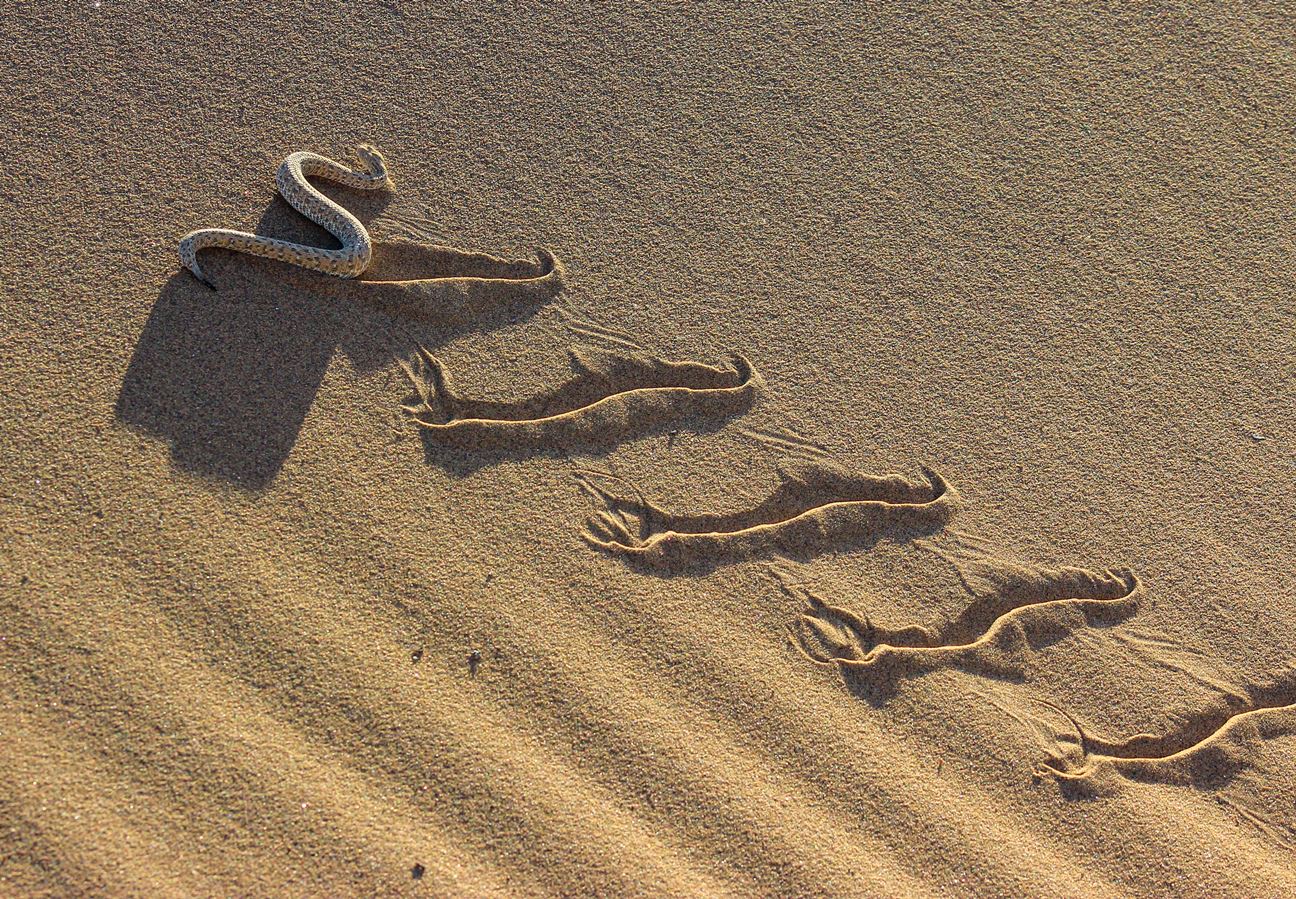
Bitis peringueyi - A sidewinder - seen in the Namib desert, as it climbs a dune and makes tracks on a sunny afternoon | PHoto by Chantelle Bosch on shutterstock
Because most reptiles today are cold-blooded, meaning they cannot regulate their body temperature, they prefer to live in moderate temperate and tropical climates. And while most of them can be found in forests, deserts, and semi-deserts, reptiles have adapted to live in slightly extreme conditions too. So they are everywhere. Today, they live and thrive in seas, jungles, forests, and mountains on all continents. Except, on the continent of Antarctica because the climate there is much colder than the reptiles can handle.
- Reptiles Can Suffer From Eating Disorders Like Anorexia
Anorexia in reptiles can be caused due to a variety of reasons. But the biggest reason is physiological changes that happen before shedding, hibernation or brumation, or egg-laying. Other common ones include sudden changes in ambient temperatures, anxiety, and even competition and bullying.
- Geckoes Can Detach Their Tail
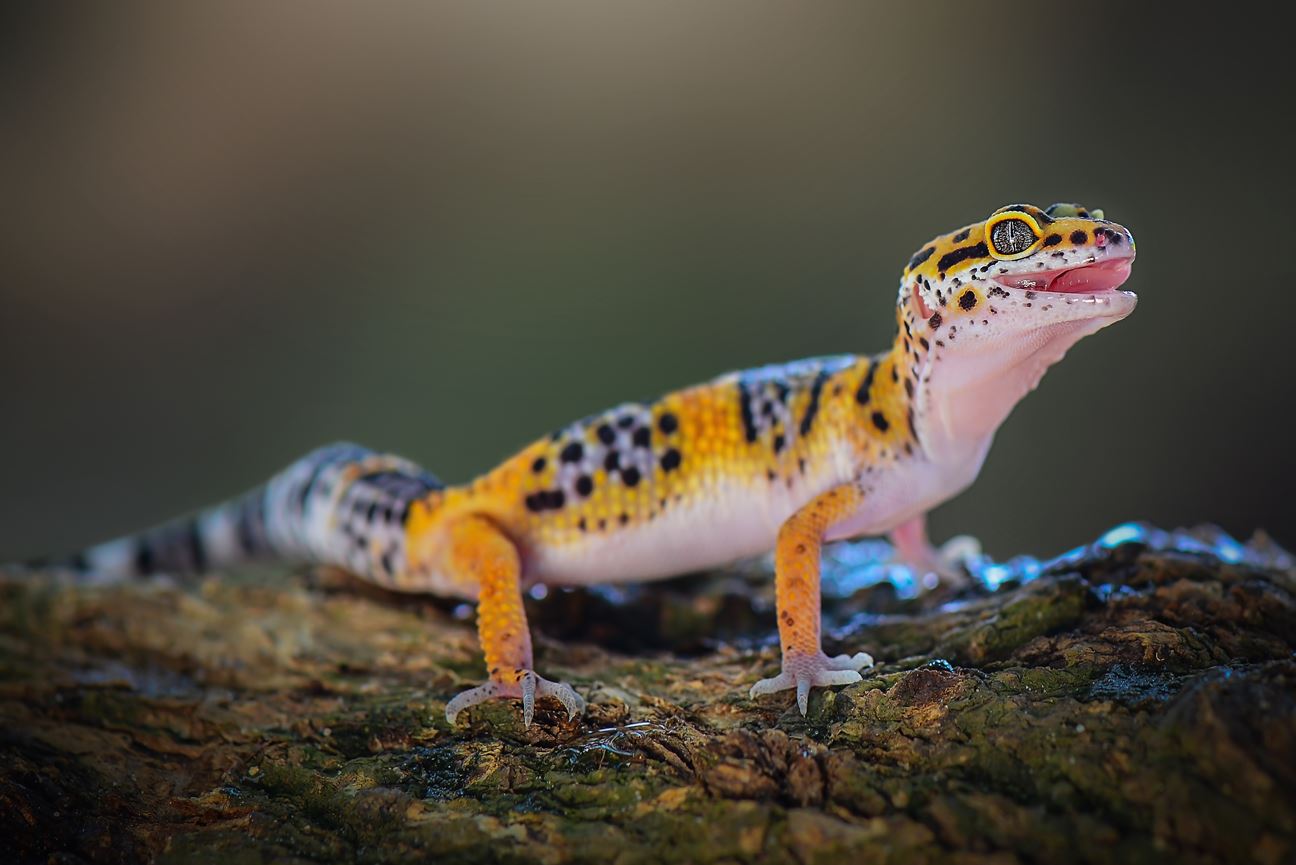
Leopard Gecko clicked on a tree branch | photo by DWI YULIANTO on shutterstock
When in danger, a gecko can detach its tail to fool the predator. A gecko will wag its tail to entice the predator, who will most likely fall for it and try to grab it. Before the predator can even fathom, the gecko has escaped while leaving its tail behind. No, geckos do not feel pain during this process, their tails are designed that way. A gecko will later grow a brand new tail, and while it may not be as good as the previous one, it will still do the trick.
- Snakes Can Be Oviparous, Ovoviviparous, and Viviparous
There are three types of snakes (births) - First, we have the oviparous snakes that lay the eggs and leave them to hatch in dark, secluded spots till the young ones are ready to come out. Examples of oviparous snakes include cobras, kraits, and rat snakes. Next, we have ovoviviparous snakes that retain the eggs in their bodies till the eggs are ready to hatch. Snakes that live in colder climates find it difficult to find warm places for the eggs to hatch, and so they take it upon themselves to incubate their eggs. Examples of ovoviviparous snakes include Rinkhals (ring-necked spitting cobras) and garter snakes. And last, we have viviparous snakes that have no eggs?! But rather give birth to live young ones that are contained within a snake’s placenta. Examples of viviparous snakes include boas, pipe snakes and water snakes.
- Chameleons Can Move Their Eyes in Different Directions
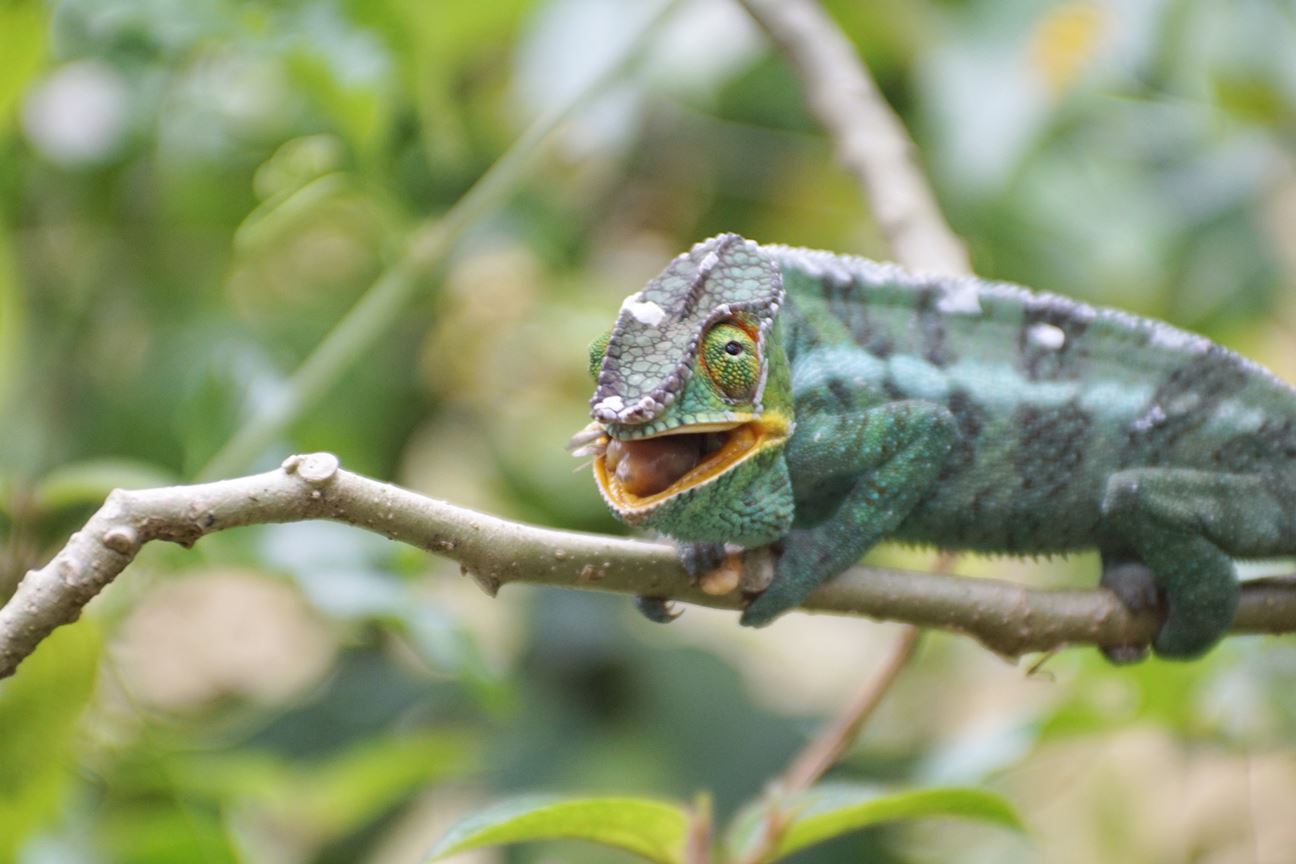
Chameleon clicked on a branch near Andasibe, Madagascar, as he gets ready for the kill | Photo by Angela N Perryman on shutterstock
Most lizards have eyes that are fixed to their skulls and are protected by eyelids. But did you know chameleons can look in different directions at once? Their eyes protrude out of their heads and the eyelids swivel while exposing the pupil. This way, their eyes can move independently of each other while keeping their field of vision narrows. Chameleons also have monocular vision, which means their brains can process two different frames at one go. When on the hunt, chameleons can even swivel both eyes to create an instant binocular vision with increased depth perception.
- Crocodiles Do Not Have Sweat Glands
Instead, they keep their mouths open to cool down. Ever seen a crocodile basking while its mouth stays open? That’s not to scare people but to release the excess heat from its body. Crocodiles are also known to pant like dogs to cool down.
- Tortoises Have Had a Space Flight
The Apollo 8 astronauts were not the first earthlings to reach space. In fact, two Russian steppe tortoises along with some worms, flies, seeds and bacteria beat them just by a few months! Soviet Union’s Zond 5 spacecraft, an unmanned spacecraft that circled the moon on September 18, 1968, had two tortoises who both came back safely to earth.
How do you plan to celebrate the National Reptile Awareness Day this 21st? Do you have more interesting reptile facts? Do let us know in the comments below.